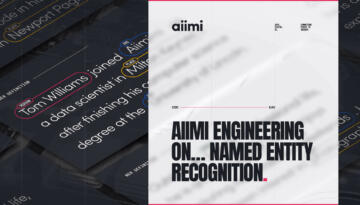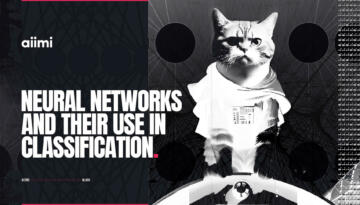Backache at work….? We’ve all been there! Part Two.

Here at Aiimi, we’re serious about the physical wellbeing and mental health of our employees. In the part one of this blog we looked at how a user’s backache was investigated by the ‘Aiimi Service Desk’ as part of our ITIL-driven Incident Management process. In this blog, the Aiimi Service Desk investigates the root cause of the user’s backache.
What is a Problem?
The ITIL definition of a Problem is: A cause of one or more Incidents.
Root cause investigation
In the case of our example user, as part of the earlier 3rd line investigation, the Physio established that there’s no physical condition or injury that’s causing the user to be in discomfort when sitting – so what is the cause of the back pain?
Is Posture the answer?
As mentioned previously, according to Google, posture is ‘the position in which you hold your body against gravity while standing, sitting or lying down’.
- Is ‘holding ourselves’ the answer?
- Is it possible to hold our body in a fixed position against the force of gravity? - Even with the greatest of willpower, you can only hold yourself in position for so long. There’s always that moment when you just ‘have to’ slump back in your chair.
- Should we be trying to hold our backs straight if it causes us more pain?
Sitting upright
- Why does sitting upright cause us so much pain?
- Why does it take so much effort?
- No wonder we slouch. It’s so much more comfortable!
Why is sitting upright so difficult?
- As adults, at home or at work, we often feel we have the weight of the world on yourshoulders - Could it be that our thinking is leading us to feel so heavy?
- If the root cause of the backache isn’t a physical injury, is the user just sitting in the only way he/she knows how? Could it be that our habit is causing us pain?
- As a young child, how is it that we could sit, stand, walk and run with ease? Is it because we didn’t have a care in the world? Until we went to school, did we ever worry about how we sat on a chair or whether our back was straight?
Alternative approach required?
- Is there an alternative to holding ourselves upright?
- Is there an alternative to slouching?
- Is there an effortless way to sit, stand, move or spend your day at a desk?
- Is it possible to sit upright without ‘trying to sit upright’?
- What can be done to make our lives at our desks more comfortable?
- Can our sitting habits be unlearnt?
- Do we all have to be in pain at our desks every day at work?
How can we change this?
- Can we make a different choice of how we sit at our desks?
- Is there a way to make conscious choices over our everyday actions?
- Can we make ourselves more aware of our habits?
- Is there a way of unlearning habits?
- Can we rediscover our innate/child-like ability to be light and effortless?
- Is there something in our thinking that leads us to move, sit or stand in a certain way?
Problem Resolution
Root cause of the user’s backache is their habitual way of sitting and their belief that only by forcing themselves to sit upright will stop the pain. Whereas, in fact, if the user changes their habit then it’s likely that they would be able to choose a different way to sit at their desk.
One possible way to achieve this change would be to see an Alexander Technique teacher. The Alexander Technique is well known for helping posture and back pain. As someone who studies this technique; for me, it is about a great deal more than that. It teaches us a way to be more conscious of our thoughts, to make new choices and to take new actions. With the assistance of a teacher we can learn this new approach and apply it on our own in all aspects of our everyday lives so that for example, sitting and moving can become effortless.
If you’d like to work at a company where support for your physical wellbeing and mental health is a priority, do please get in touch via our website.
Stay in the know with updates, articles, and events from Aiimi.
Discover more from Aiimi - we’ll keep you updated with our latest thought leadership, product news, and research reports, direct to your inbox.
Aiimi may contact you with other communications if we believe that it is legitimate to do so. You may unsubscribe from these communications at any time. For information about our commitment to protecting your information, please review our Privacy Policy.
Enjoyed this insight? Share the post with your network.
Backache at work….? We’ve all been there! Part One

IT Support – It’s a dirty job but somebody’s got to do it…Part Two








